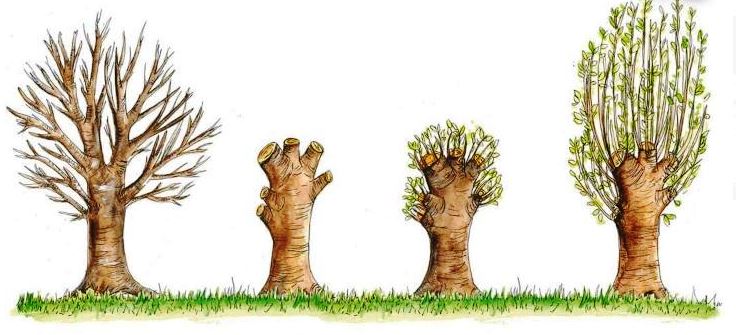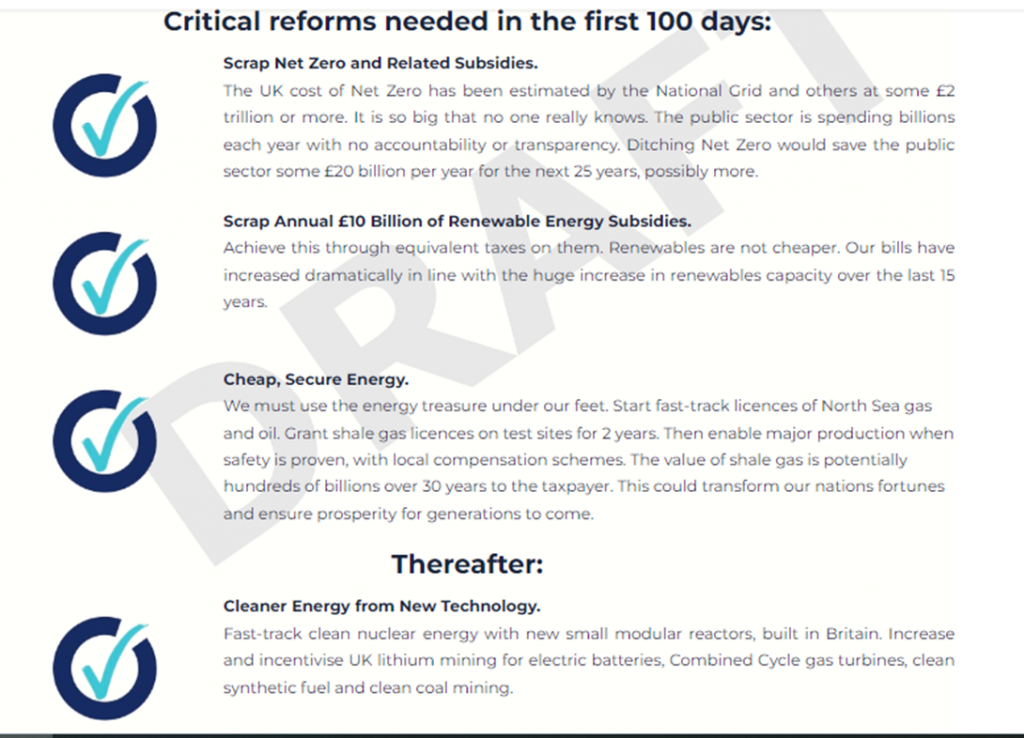May 31st
Starting with beautiful clover, we then have lots of correspondence. Part 2 brings some opinions of the Labour Party Great British Energy concept, compared with ideas of other political parties.


A few friends brought me plants as their thoughtful and generous contribution at the birthday do. I have planted out all except one (it needs some new trellis), and I realise it is lucky we haven’t had a very hot dry spell during half term, quite the contrary it’s been like mid-autumn, wet and windy. The little chestnut saplings have survived well, the tomato plants not so good as slugs got into the gro-bag. The big, purple lupins above have settled into their pot happily, but I was worried they seem to stand out as being very cultivated, compared with all the wild areas of the Meadow. Then I saw, out of the corner of my eye, a patch of equally vibrant clover flowers and thought, they match well! And wondered what they are.
Red or Purple Clover Trifolium pratense Family Fabaceae (Pea) Native to Europe, Western Asia and North Africa and naturalised around the world. Distributed throughout the UK and Ireland. Found in – lawns, pastures, roadsides and meadows.
This clover is an herbaceous low growing perennial, easily recognisable by mid-green 3 leaf (trifoliate) leaves with a characteristic pale v-shaped mark. The flowers are made up of a number of tiny individual florets and are purple, despite its red name. The seeds, which are just like tiny peas, are found at the base of the flowers. It is a herb with a long history of medicinal usage, mainly taken for cough, skin complaints and menopausal symptoms. I tried making myself a tea, with some honey, to ease a sore throat … quite an unusual taste, not unpleasant and a good result.
As well as tea or syrup, for throats and stubborn coughs, sinusitis or bronchitis, the flowers can be applied externally for skin conditions such as acne, burns, eczema and psoriasis. Finally, the plant contains isoflavones, which are phytoestrogens – compounds similar to estrogen.
Both leaves and flowers are edible. The blossoms have a gentle and sweet taste with a hint of bean flavour, when eaten raw. Break up the flower heads and sprinkle the blossoms into salads. They are also a good addition in baking and look beautiful as a garnish.
Humans are not the only ones to benefit from purple clover; bees and butterflies are attracted in high numbers to the tiny round flowers with the promise of their rich sweet nectar to be found in long, lush grass. Even children used to suck the base of the flower to appreciate this little drop of sweet nectar, released by the heat of the sun.
Extra note on Butterflies
In a rare moment of sunshine last weekend, I decided to go exploring a few areas where butterflies might be expected to bask. One was a south facing wildflower meadow in full sun, the other a break in the canopy of a wild wooded glade. There was not a sign of any butterflies, so I wrote to Sue Allen, our friendly expert and asked .. Q ‘is this normal in late May?’ A – ‘no it is not normal’.
This spring Butterfly numbers appear to be down. They have not enjoyed the wet and cold… if only we could have some warm weather! They are flying in very small numbers at the moment, so we hope within the week things will improve…
We are hoping to meet and walk together soon and – seeing the absence of species near to home – I proposed the Marsh Fritillary habitat, a few miles north of here in Breney Common and Red Moor sites, Lanlivery.
I’m quite familiar with those Wildlife Trust areas and it’s definitely somewhere I want to go. I hear there are some concerns about the Breney population …


Whilst butterflies are struggling, in the wild woods and meadows of this part of the country, deer numbers are growing steadily. My neighbour found a new-born fawn on his land, left alone in an area of deep grass: –
Fawns, born from May through July, are purposely left alone by their mothers. The female deer (doe), stay away from the fawns to avoid leading predators to their location.


Pilot Project Ideas – Progress and Correspondence
Of the 3 pilot project ideas I shared last time …
The first ‘Manage fallen trees for Multiple Community Benefits’ is beginning to attract attention and correspondence:-
Bruce, in Cambridgeshire, wrote to share the policy they operate in his somewhat different style of woodland, with not so many fully developed big trees, like our hundreds of years old beech:-
Managed Woodland
At Melwood, the small local nature reserve you visited, we have a tree control approach:-
Fallen trees are cut up and used as path borders and insect hostels. A local wood carver has taken some in the past if particularly interesting quality or grain.
Ash affected by die back is felled and burnt. Young sycamores, being particularly pernicious, are dug up by hand – a time consuming and back breaking exercise – but worth it. Elders also are kept under control. All such clearance is undertaken in conjunction with the tree protection officer at the Local Council.
We also remove other trees, to bring more light into some areas to encourage the flora on the base and to give young healthy trees more space, and we pollard.
(NB here I felt the need to find out more re pollarding so consulted the following excellent source, which goes into coppicing, formative pruning and thinning as well)
https://www.woodlandtrust.org.uk/plant-trees/managing-trees-and-woods/types-of-woodland-management/
What is pollarding? – the regular cutting of upper branches to encourage regrowth of dense foliage at the top of the tree. The cut branches can be used for firewood, building materials and other coppice products. Pollarded branches were traditionally used for animal fodder. Opening up the canopy in this way increases woodland light levels and benefits ground flora while making it more productive for grazing. Which species can be pollarded? Willow, ash, beech, hornbeam, lime and holly are traditionally pollarded for tree fodder, but most native trees can be pollarded.
Cut your tree so it is out of reach of any potential browsing animals (note the considerations about deer, here):-
- 1.2m for roe deer and sheep
- 1.5m for fallow deer
- 1.8m for red deer and goats
- 2m or more for large cattle
What is coppicing? – an ancient system of woodland management. Trees are cut close to the ground on a regular cycle. They regrow from dormant buds at the base of the stump (known as the stool) to create dense stands of multi-stemmed trees. The new stems grow back faster to provide a sustainable timber supply rather than harvesting more mature, thicker branches. Which species can be coppiced? – Most native trees, but commonly oak, sweet chestnut, willow, lime, hornbeam, field maple, rowan, alder and hazel. When to coppice – Start coppicing once trees are growing vigorously. This could be after 1-2 seasons but is usually 5-6 years (more in Scotland). The best time to coppice is late September to early March when trees are dormant. Frequency depends on species and products you want to create, for example:
- Hazel: 7 year cycle for hurdle making
- Sweet chestnut: 15 year cycle for fencing materials
- Oak/hornbeam: 15-25 year cycle for firewood and building materials.
Bruce’s email continued by sharing an abstract from their management plan. This gives a more complete picture and conclusion regarding techniques used:-
· Methods will be a combination of coppicing (felling and allowing the stumps to re-grow), pollarding (similar to coppicing but leaving a length of tree trunk standing), crown reduction (removing a few large, shading branches) and very limited felling (not allowing the tree to re-grow);
· Planting of trees, shrubs, tubers, bulbs, etc. and distribution of seed (purchased if necessary) where appropriate, will facilitate the objectives of the management plan;

The second correspondence on this Pilot Project idea was from Toby, The Wild Arborist himself. He would like to make clear that his Shire, Alfred, is currently not working as he has only just turned 4, so he is very much still in training for the next year or so. Any extraction work undertaken in terms of horse logging would be with myself and a mentor and friend, with his Shire Jackson (a 17 year old horse who is an old hand at logging).
Another slight amendment would be regarding the British horse loggers. As Alfred isn’t currently working, I’m not yet on the ‘working members register’ for the British horse loggers. To join will require me to be assessed on site for competency by the organisation before they put me on the working register.
And a bit more about me – I’ve been operating in the industry for 12 years now, and specifically work on either sensitive sites or where low impact extraction methods are preferable. Alongside the horse logging, I do also have a mini excavator which I use to carry out extraction and felling operations alongside a team of colleagues who hand-cut (fell) with me.
The mini excavator also provides a low impact alternative and carries out the majority of heavy work which sometimes isn’t suitable even for the shires.
This Pilot idea is definitely evolving and fast. Soon we have discussions scheduled ref the mental health side of things, plus it has occurred to me – linked to another target for the valley – if we ever could own our own Shire horse(s) perhaps rides like this (in the New Forest) could happen on weekends and holidays. In my imagination, people would walk a restored ancient tramway track, involve themselves in patting the horses and sharing the nosebag of corn with them at a break point and then take a ride back:-

Pilot Project 2 (plus a potential number 4 also)
I have had many hours of discussion relevant to the clay trial, and also another potential project that might happen near to the old Luxulyan Viaduct. There is quite a story involved so will save it up for another day.
Great British Energy
Green Party assesses all options, across a wide spectrum of targets. Mostly the Green Party comes out on top but with no clue how to raise the kind of £s they need. On this though, (power Britain using home-grown energy) Labour and its plans come top.
- Labour Party. Labour’s clean power by 2030 policy platform is seriously aspirational. The only real green policy area that survived the chop in February’s U-turn on its green infrastructure pledge, this remains the core of the party’s climate platform for the election, alongside its plan to form GB Energy to invest in new capacity. The inclusion of some red herrings in the form of new nuclear energy and an overemphasis on hydrogen aren’t particularly helpful, but overall a seriously solid bit of policy. 9/10

Of the 2 main parties, generally all reviewers are tending to say that Labour has more substance and better-looking outcomes for Climate policies, though not necessarily for Nature recovery. I did read one aside, leaving open the door for a possible shock in the Conservative manifesto … that it might come out full of ambitious new climate pledges?! But I cannot see how anyone would be able to believe such a thing; their record in recent times, particularly under Rishi Sunak’s leadership, is so low in its aspiration e.g.
the Party claims to be committed to the UK’s net-zero by 2050 goal, but the Tory Government has demonstrated constant support for the expansion oil and gas licensing in the North Sea. Green groups have argued that this approach is inconsistent with the UK’s net-zero by 2050 pathway. Indeed, the Conservative Government’s overarching net-zero plan has twice been ruled unlawful in court.
the Party has faced significant backlash from the green economy in the past year, for lacking a green industrial strategy and for rolling back certain key net-zero policies. Changing plans on low-carbon heating, building energy efficiency and electric vehicles, Sunak cited the cost-of-living crisis and described his approach as ‘pragmatic.’
https://www.edie.net/make-for-break-for-net-zero-rishi-sunak-calls-a-july-general-election/
Of the minority parties, it looks to me as if Lib Dems are strongest, Green obviously full of ambition but not realistic and Reform a radically opposite approach. I won’t ‘dis’ all of their info, because some of my closest friends and colleagues share the views that CO2 is not a bad thing, that we don’t have to pursue energy transition so fiercely etc. I like to give all sides of arguments an airing in this blog, so here we go (but look … they cannot even spell the word Environment properly!)
https://www.reformparty.uk/energy-and-environment


Finally, as usual, the Events list:-
Sunday June 2nd – another open day at the Bridge Mill, Holsworthy as part of National Garden Scheme. Having missed the last one, this time I am going to make every effort to get there!
https://www.thebridgemill.org.uk/thebridgemill/Home.html
Wednesday June 5th – A first for me, making a presentation to Lerryn WI on the theme ‘From music teacher to Eco-nutcase!!’. The first part of the evening is private but come along at about 7.45 if you would like to hear my life in’Desert Island Discs’ fashion.
After that we are into the run up to the Great Big Green Week (10th to 18th June), so do have a look at what it means in your area. Here in Cornwall the main promoters are in Camborne, with their event on Saturday 8th June
Camborne’s Great Big Green Fest &
Great Big Green Week
Unfortunately Saturday 8th June is a date so much in demand, one will have to make hard choices:-
St. Austell, at the Quaker Meeting House from 15.00 hours – ‘Why eat Plants?’
Wadebridge, the Royal Cornwall Show – end of each day has reduced price tickets, adults for £11.50
World Oceans Day around the world – https://www.un.org/en/observances/oceans-day which here coincides with Par Beach Desalination Protest,
8th June 4.30-5.15 Say No to Desal on World Ocean Day!
Join us for a paddle/swim out with a Show of Strength on the beach to show how many people oppose SWW’s plans for desalination in Cornwall!
4.30pm – gather on Par Beach – look for the Blue Gazebo
4.50pm – beach parade with placards/banners and The Horners Street Band
4.55pm – boats assemble in the bay, paddlers launch, swimmers get ready!
5pm – swimmers go, human chain along shoreline, boat horns, drums, MAKE SOME NOISE!!
Main event in Par but join from Polkerris, Spit and Carlyon with boats from Fowey and Mevagissey.
Home-made placards and banners very welcome OR download the graphic artwork that Mike Stone has worked on for us click here.






